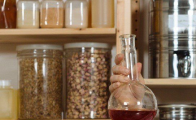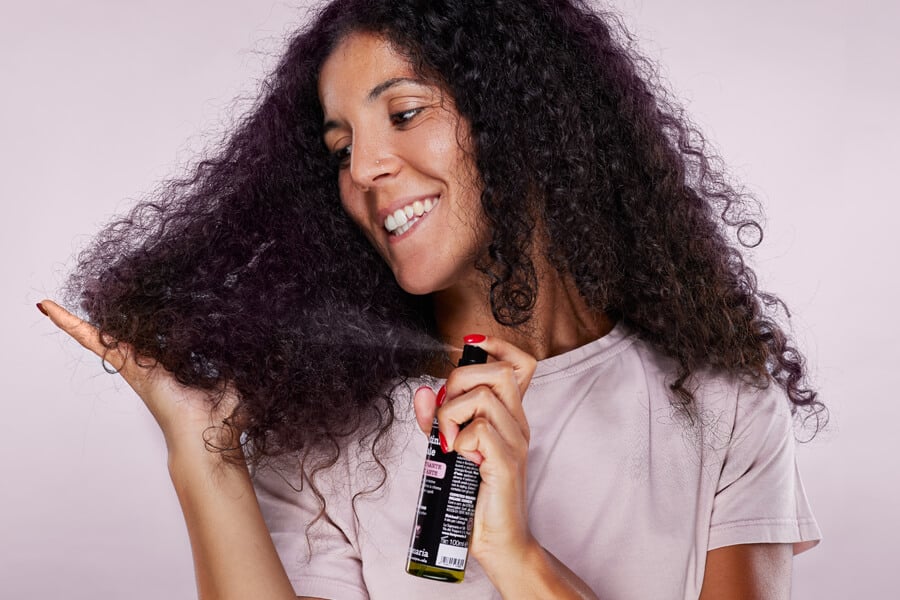The insights of La Saponaria
INCI lists: how to read them and all the useful tools to decipher them
What are cosmetics made of? If we read the label carefully, we’ll find a long list of ingredients, most of the completely indecipherable: welcome to the world of INCI! By the term INCI, we mean the complete list of ingredients a cosmetic product is made of.
INCI, the mystery ingredients
What seems obvious to us today, namely knowing what ingredients make up the things we buy, is actually a recent achievement of transparency, since it has only been mandatory to publish INCI lists in the European Union since 1997. The INCI, or International Nomenclature of Cosmetic Ingredients, is simply the list of all the ingredients that make up a cosmetic product.
But unless you work in the field, some names are bound to leave you in the dark. And however hard you try, you’ll soon realise it’s not possible to learn them all by heart, so you’ll need tools that can tell you whether a component is as terrible as it sounds from the name, or is totally non-toxic.
For example: what is Sodium Benzoate? The name sounds like something nasty and dirty that smells of oil, right? If you do a little research, however, you’ll find out it’s a preservative commonly used in organic cosmetics.
Order is important
But do you really have to read the whole long list of ingredients? Well, the most important ingredients to dwell on are those that appear first.
On the INCI list of a product, the ingredient contained in the highest percentage should be placed first, followed by the others, in descending order. Below 1%, ingredients may be listed in no particular order.
What language is it?
Ingredients may be written on the label in Latin or with an INCI designation that may resemble Latin or English, but is not exactly either: INCI has a language of its own!
When we find ingredients written in Latin, it means that they have been included in the formulation without undergoing any chemical modification: this is the case for plant oils, for example. So, the Latin names refer to botanical ingredients or ingredients present in pharmacopoeia. For example, sweet almond oil is referred to as "prunus amygdalus dulcis oil'.
All ingredients that are not in Latin have undergone a chemical transformation.
For example:
• Olive oil = Olea Europaea Fruit Oil*
• Saponified olive oil (i.e. olive oil which has undergone a chemical transformation) = Sodium Olivate
On the INCI list, you’ll also find numeric codes, which indicate artificial colourings: these follow the international list called "Colour Index", which includes the abbreviation "CI" followed by a series of 5 digits.
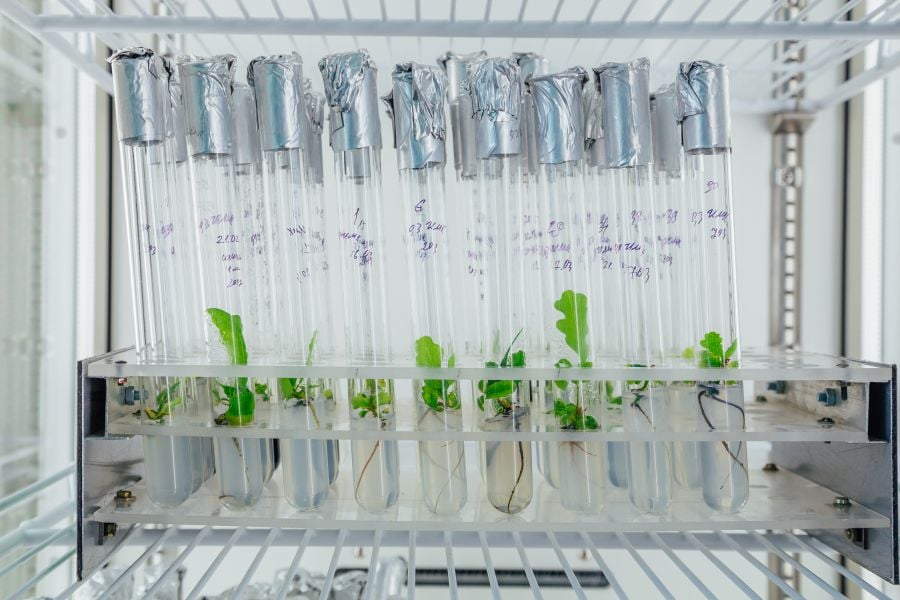
Ingredients to avoid
In general, a cosmetic product that aims to be environmentally friendly should not contain ingredients such as:
• Petroleum-derived ingredients such as Paraffinum Liquidum, Paraffin, Mineral Oil, Petrolatum or Vaseline, but also PEG and PPG and Mineral Oil. Derivatives from oil refining can also be surfactants, such as Sodium laureth sulfate, Sodium lauryl sulfate and others. While petroleum derivatives appear leave the skin soft, they are incompatible with it, so in the long run, they suffocate it, because they do not allow it to breathe
• Silicones: when we find Dimethicone or Cyclopentasiloxane on a label, we’re looking at silicones, which are fairly easy to recognise, because their names always end with the suffixes -one or -xane. As well as polluting the environment, silicones create a film on the skin and hair that makes them appear shiny and nourished, when in fact, just beneath the surface, they are drying out and becoming undernourished
• Highly polluting ingredients such as EDTA, MEA, TEA, MIPA
• Ingredients that are highly allergenic or considered to be potential formaldehyde donors, including: Triclosan and Imidazolidinyl urea, DMDM Hydantoin, Methylisothiazolinone and Methylchloroisothiazolinone, used as preservatives
The ingredients used in cosmetics are innumerable, but once you start reading product labels, you’ll notice the substances that appear most frequently, so you can begin to memorise them as components to be preferred or avoided.
INCI: useful tools for deciphering them
On internet, you’ll find various websites and apps to consult for evaluating cosmetics. Usually all you have to do is enter a product to get the full list of ingredients classified as green / yellow / orange / red, where green means natural, safe and well-tolerated ingredients, yellow and the orange are ingredients that have been flagged as potentially allergenic, and red indicates those to really watch out for, because they are classified as risky.
A limitation of these apps? They do not evaluate the amount of product in the formula, but rank an ingredient in absolute terms. So, when we see an ingredient marked as yellow, should we be worried? Not exactly. For instance, all essential oils will come up as yellow, because they are potential allergens. The various apps indicate them as ingredients to be used with care, due to their allergenic and irritating power. However, they are also ingredients with multiple beneficial properties if used correctly. Because of these characteristics, they must be used in the right concentrations and in the right ways. And this is where the role of the formulator comes in: demonising an ingredient per se is never a wise move. Unless we want to avoid it because we are allergic to it, an ingredient must always be considered as part of the overall formula. It is up to the skill of the formulator to dose all the ingredients in the best possible way to exploit the advantages of each without suffering the disadvantages, balancing the formula so that it always performs as well as possible.

In the apps, some surfactants (e.g. ammonium lauryl sulfate) are also marked as orange and therefore 'moderately risky'. These ingredients are considered 'orange' not because of environmental concerns or because they are not natural (this is not questioned), but because of their irritant potential. It is certainly true that these surfactants, if used in excessive concentrations and not adequately balanced within the formulas, can be irritating.
This is where the skill of cosmetic formulators comes in: they must be able to balance the ingredients correctly so that the end result enhances the properties of the individual components while mitigating and eliminating their negative effects. In short, it is like saying that salt is an inevitably harmful ingredient. It is certainly true that too much salt is harmful to health, which is why no one would dream of eating a teaspoon of it, and using too much of it would ruin recipes, but our meals would be significantly less tasty if we eliminated it altogether!
This is why when skin tolerability tests or dermatological tests are carried out on sensitive skin, they do not evaluate the single ingredient, but the entire formula.
The sites and apps for analysing INCI lists
We felt the need to make this clear, but we nonetheless find it useful to use apps and websites that can help us understand the world of INCI better. The most popular apps are:
1. EWG Skindeep: one of the best apps to evaluate the INCI ingredients in a cosmetic. It has very comprehensive fact sheets for each ingredient analysed, and the rating is divided by area, so there is no single grade, but it explains why a given rating is given and also provides many scientific references. It is probably not too straightforward, and aimed more at people in the industry, but it is certainly the most comprehensive. It is in English only. Here is what an ingredient evaluation sheet looks like, for example:

2. Yuka: a widely used and downloaded app that enjoys many positive reviews. The secret of its success? It’s fast and effective: simply scan the barcode of a cosmetic product or foodstuff to see the classification of its ingredients, rated on a scale from green through yellow and orange to red (considered unacceptable).
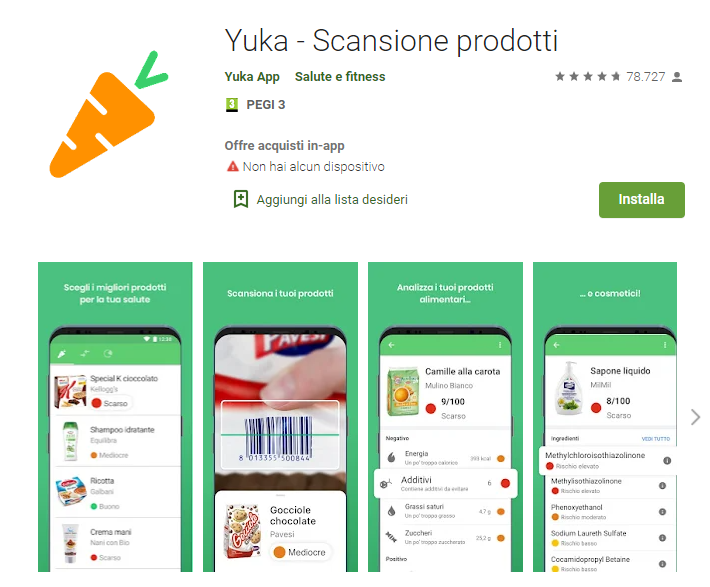
Its strength? A truly extensive product database that is updated daily. The assessment is independent, and it is also able to recommend alternatives with a cleaner INCI. It has a nice dedicated website explaining the whole project, and is available from both the Play Store and the Apple Store.
3. INCI Beauty: this free app allows you to analyse cosmetics by scanning the barcode or searching by name, brand or product type. After creating your account, you can leave comments and reviews, and if a product is not yet in the database, you can add a photo or list of ingredients to receive an analysis of its composition.
The app allows you to find alternatives with different or better-tolerated INCI ingredients, and also to exclude a particular group of ingredients from your cosmetics, making it a very useful feature for all allergy sufferers! Each component is assessed according to its level of hazardousness or its potentially dangerous effects for the environment or health. Each ingredient has been assigned a flower and a colour ranging from green to red. The app is available from the Play Store or Apple Store.

4. Greenity: an app that allows you to search for various cosmetics by name or by scanning the barcode. Once the desired product is found, all the ingredients it is composed of will appear, classified with a colour scale ranging from green (excellent ingredient) to red (harmful ingredient). The app also allows you to search for individual ingredients, and the database is constantly being updated. You can download Greenity from both the Apple Store and the Play Store.
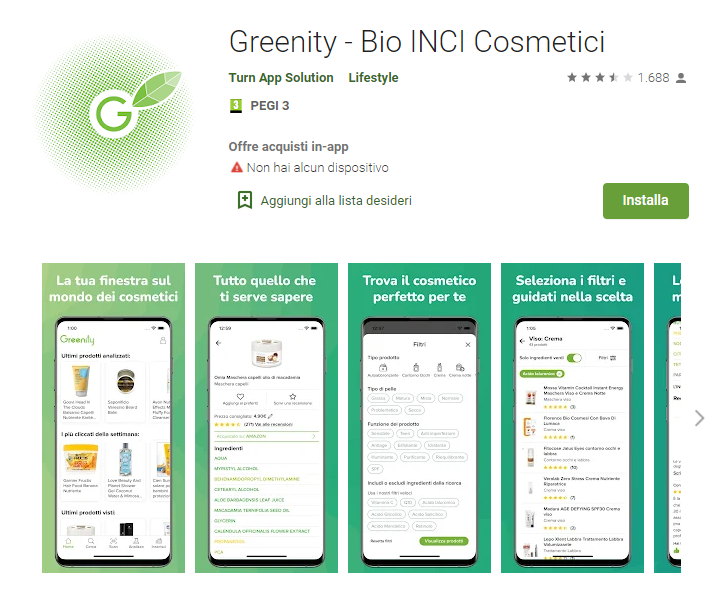
5. Ingred: a very similar app to Yuka, useful for analysing cosmetics and food. Simply take a photo of the ingredient label, and it will show the list of all the ingredients in the product photographed. You can click on each ingredient to see its explanation. It can be found in both the Apple Store and the Play Store.

6. Biodictionary: no list of websites and apps useful for deciphering INCIs would be complete without the famous Biodizionario, composed with dedication by Fabrizio Zago, an industrial chemist. Consultation is simple and basic: just enter one of the ingredients you want to analyse to receive clear, simple answers. The website also features a popular forum where you can read and write about topics not strictly related to cosmetics. The limit? As specified by Zago himself on the home page of the website, this is his version of the facts, which is the result of years of work in the field, but it does not represent an absolute truth and must often be interpreted with a little common sense.
Have you found the most interesting and most suitable app for you? Give it a try now: download it and check out La Saponaria products.
The vast majority of the ingredients you’ll find will be green. There will, however, be a few yellows: in 90% of cases, these will be essential oils, considered allergenic, as we have seen, but necessary to give our recipes a good scent!
Our Glossary
We would like to dedicate a special mention to our Glossary. Over the years we’ve been doing our best to create a file for each ingredient used in our recipes. What we want to tell you about is their origin and the story behind each one of them. Any particular examples? Our lavender, which grows in the Conero hills, overlooking the sea; the wonderful iris, star of the Roots Body range, which is harvested and processed by hand in the Sibillini Mountains, or our tea tree, which comes from a Fairtrade project in Kenya.
But the Glossary also seeks to clarify the function and use of all the ingredients, from first to last, even those that sound less noble and glamorous, but are nonetheless necessary and important, such as glycerine, for example, so that anyone wishing to learn more about what they can find in our cosmetics can do so with a simple click, always bearing in mind that a good cosmetic must be evaluated considering its formula as a whole.

Written by Simona
She is La Saponaria’s digital writer: always juggling a newsletter to send and a blog article to publish, she lovingly takes care of our social media channels and our e-commerce.



